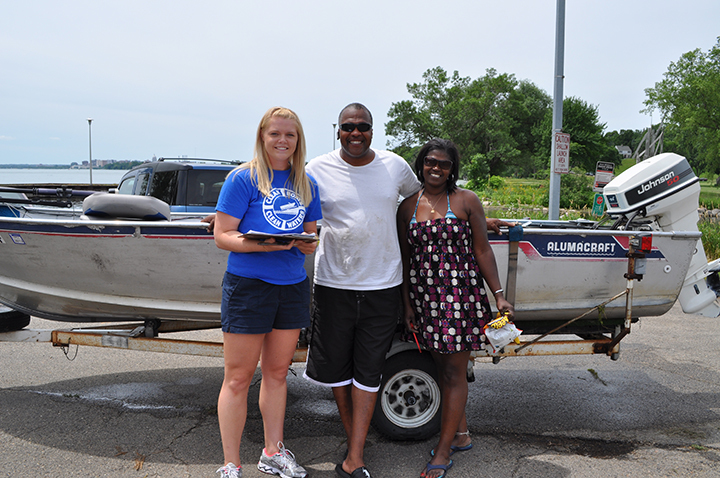Help Stop The Spread Of Aquatic Invasive Species – Urban Milwaukee

Wisconsin Department of Natural Resources Launches Great Lakes Landing Blitz to Prevent Spread of Aquatic Invasive Species
Introduction
The Wisconsin Department of Natural Resources (DNR) has initiated the Great Lakes Landing Blitz from June 30 to July 13, 2025, aiming to curb the spread of invasive plants and animals in Wisconsin’s waters. This campaign aligns with the Sustainable Development Goals (SDGs), particularly SDG 14 (Life Below Water) and SDG 15 (Life on Land), by promoting the conservation and sustainable use of aquatic ecosystems.
Campaign Overview
During the Independence Day holiday weekend, thousands of boaters and anglers are expected to enjoy Wisconsin’s water bodies, increasing the risk of spreading invasive species. The Clean Boats, Clean Waters program mobilizes watercraft inspectors statewide to educate the public on aquatic invasive species prevention.
Key Objectives and Activities
- Educate boaters and anglers about the risks and prevention of aquatic invasive species.
- Demonstrate prevention steps at busy boat landings.
- Engage with the public to answer questions and raise awareness.
Historical Context and Collaboration
The Landing Blitz began in 2008 as a Wisconsin initiative and expanded in 2018 to include all Great Lakes states and provinces through an international partnership involving federal, state, provincial agencies, and Indigenous Nations. This collaboration supports SDG 17 (Partnerships for the Goals) by fostering cooperation across borders to protect shared water resources.
Community Involvement and Commitment
Hundreds of volunteers participate annually, demonstrating Wisconsin’s commitment to preserving aquatic ecosystems. This grassroots engagement supports SDG 12 (Responsible Consumption and Production) by encouraging sustainable recreational practices.
Prevention Measures Required by State Law
To protect lakes and rivers, all water users are urged to follow these legally mandated prevention steps:
- Inspect boats, trailers, and equipment before and after use.
- Remove all mud, aquatic plants, and animals attached to equipment.
- Drain all water from boats, vehicles, and equipment, including livewells, ballast tanks, and fish buckets.
- Never transport plants or live fish away from a waterbody.
- Dispose of unwanted bait in the trash.
Impact on Sustainable Development Goals
- SDG 14: Life Below Water – Protects aquatic biodiversity by preventing invasive species that threaten native ecosystems.
- SDG 15: Life on Land – Supports the health of freshwater ecosystems and surrounding terrestrial habitats.
- SDG 12: Responsible Consumption and Production – Encourages sustainable recreational practices and responsible resource use.
- SDG 17: Partnerships for the Goals – Demonstrates effective collaboration among multiple stakeholders across regions.
Further Information
For more details on invasive species and their impact on Wisconsin’s waters and economy, visit the Wisconsin DNR Invasive Species webpage.
Photo Credit
By taking simple prevention steps, we can all protect lakes and rivers while enjoying Wisconsin’s waters. / Photo Credit: Dane County Land & Water Resource Department
1. Sustainable Development Goals (SDGs) Addressed or Connected
- SDG 6: Clean Water and Sanitation – The article focuses on protecting lakes and rivers in Wisconsin from invasive species, which directly impacts water quality and ecosystem health.
- SDG 14: Life Below Water – The prevention of aquatic invasive species spread helps preserve aquatic ecosystems and biodiversity.
- SDG 15: Life on Land – Protecting freshwater ecosystems and preventing invasive species supports terrestrial and freshwater biodiversity conservation.
- SDG 17: Partnerships for the Goals – The article highlights collaboration among federal, state, provincial agencies, and Indigenous Nations, demonstrating partnerships for sustainable development.
2. Specific Targets Under Those SDGs Identified
- SDG 6 Targets:
- 6.3: Improve water quality by reducing pollution and minimizing the release of hazardous chemicals and materials.
- 6.5: Implement integrated water resources management at all levels.
- SDG 14 Targets:
- 14.1: Prevent and significantly reduce marine pollution of all kinds, including from land-based activities.
- 14.2: Sustainably manage and protect marine and coastal ecosystems to avoid significant adverse impacts.
- SDG 15 Targets:
- 15.8: Prevent the introduction and significantly reduce the impact of invasive alien species on land and water ecosystems.
- SDG 17 Targets:
- 17.17: Encourage and promote effective public, public-private, and civil society partnerships.
3. Indicators Mentioned or Implied to Measure Progress
- Indicators for SDG 6:
- 6.3.2: Proportion of bodies of water with good ambient water quality.
- Monitoring the presence or absence of invasive species in water bodies as a proxy for water quality and ecosystem health.
- Indicators for SDG 14:
- 14.1.1: Index of coastal eutrophication and floating plastic debris density (adapted here for freshwater invasive species presence).
- Indicators for SDG 15:
- 15.8.1: Proportion of countries adopting measures to control or eradicate invasive alien species.
- Number of educational campaigns and inspections conducted (e.g., Clean Boats, Clean Waters program activities).
- Indicators for SDG 17:
- 17.17.1: Amount of United States dollars committed to public-private and civil society partnerships for sustainable development.
- Number and scope of collaborative events such as the Great Lakes Landing Blitz involving multiple stakeholders.
4. Table: SDGs, Targets and Indicators
| SDGs | Targets | Indicators |
|---|---|---|
| SDG 6: Clean Water and Sanitation |
|
|
| SDG 14: Life Below Water |
|
|
| SDG 15: Life on Land |
|
|
| SDG 17: Partnerships for the Goals |
|
|
Source: urbanmilwaukee.com








